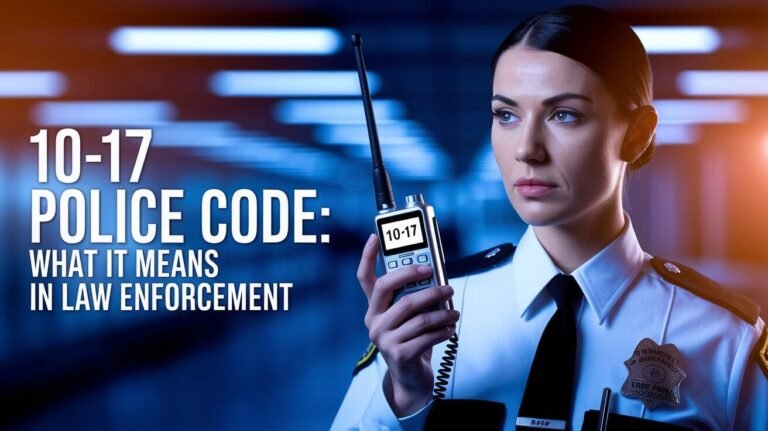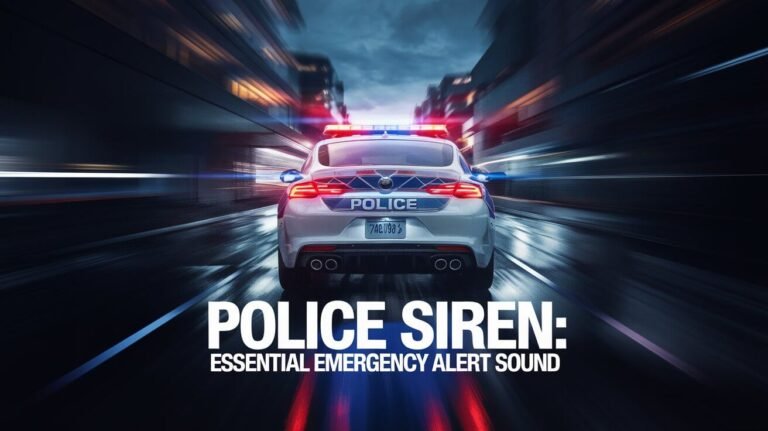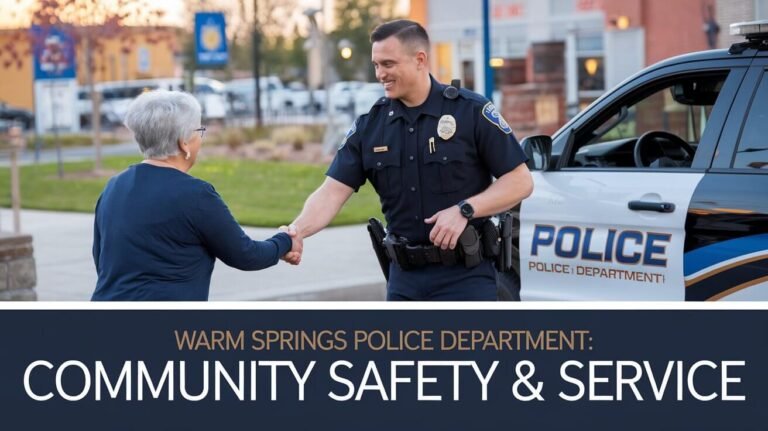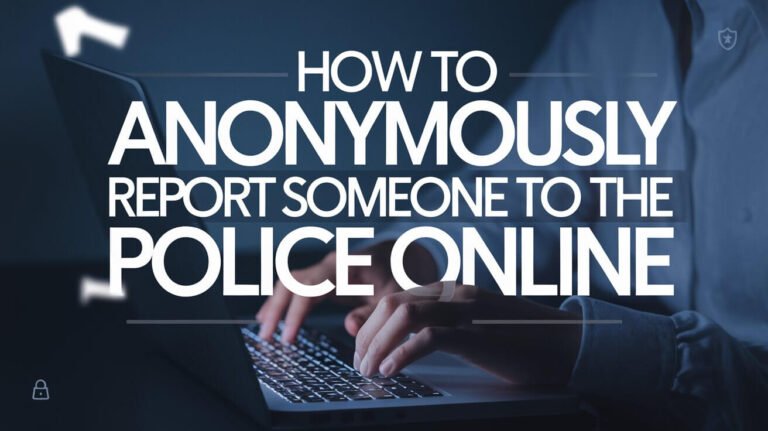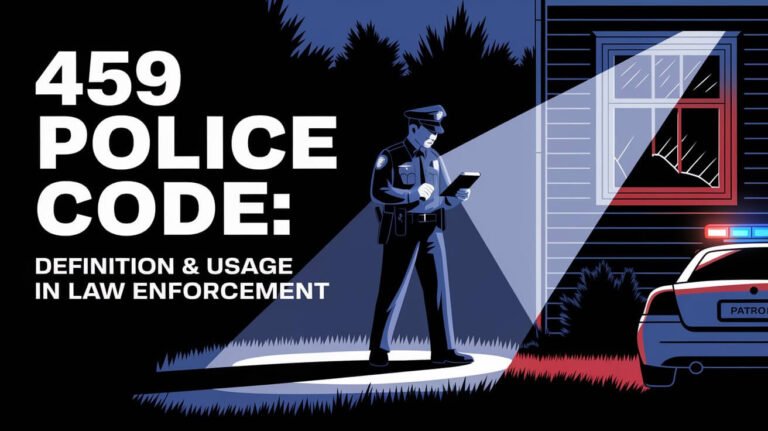Police Code 30-8: What It Means & When It’s Used
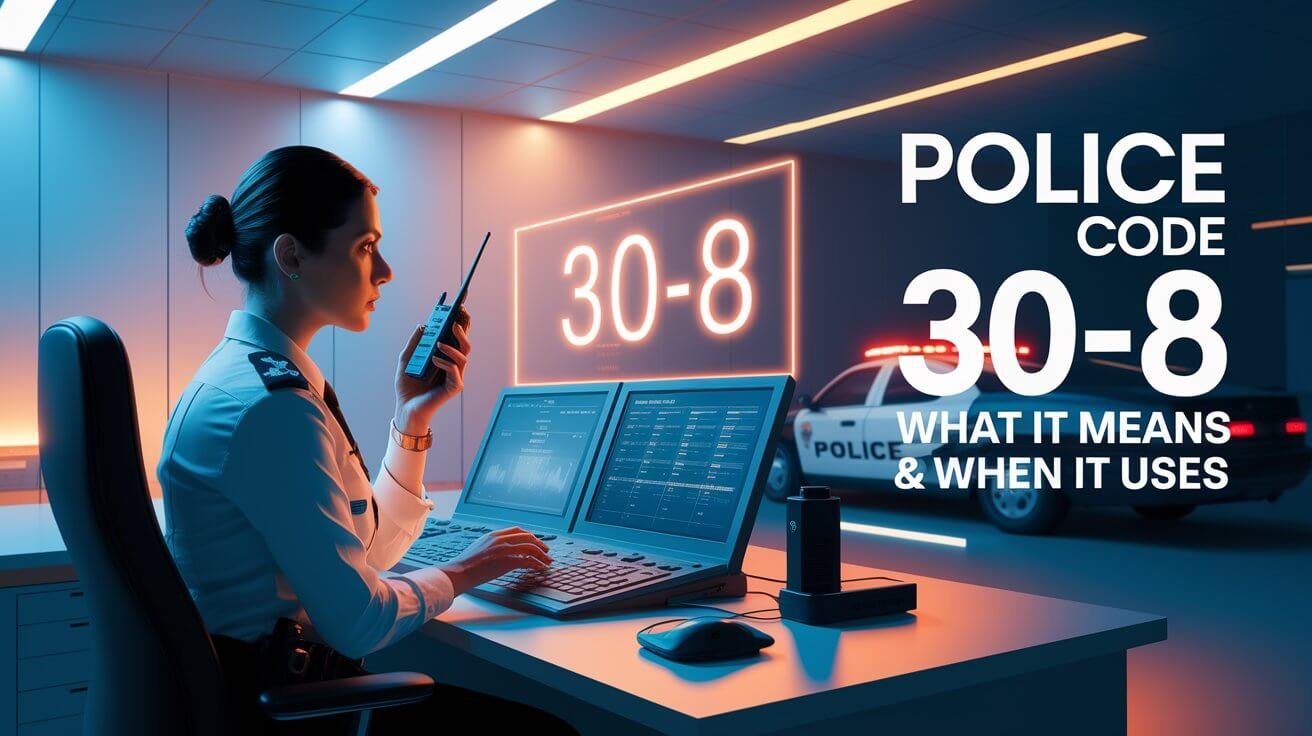
Knowing law enforcement signal protocols is key for public safety. Police Code 30-8 is a special signal used by police. It helps ensure fair pay for off-duty officers under the Federal Fair Labor Standards Act (FLSA).
Local units must have a clear policy for hiring off-duty officers. This policy includes setting rates for their work. These rates cover different costs like personnel, vehicles, and equipment.
Local units must give a detailed report to outside entities within 30 days. This report lists officers, vehicles, and costs. This is a vital part of Police Code 30-8.
The General Assembly meets in January each year. Members get a break in court cases before and after the session. This shows how important it is to know about law enforcement protocols and public safety codes, like Police Code 30-8.
Definition of Police Code 30-8
Police codes are key in law enforcement, helping officers talk quickly in emergencies. Knowing what Police Code 30-8 means is important. It helps us understand its role in police communication.
Police Code 30-8 aids in fast communication among officers. It ensures a quick and effective response to emergencies. By understanding Police Code 30-8, police can respond faster and better in emergencies.
Key Components of Police Codes
Here are the main parts of police codes like Police Code 30-8:
- Signal parameters: These tell when a police code is used.
- Official classification: This is how police codes are grouped in law enforcement.
- Standard protocol elements: These are the rules for using police codes, including signal parameters and classification.
Looking at these parts helps police understand Police Code 30-8 better. This improves their emergency response times and effectiveness.
Origins and Development Through Police History
The history of police codes is quite interesting. It shows how law enforcement has evolved over time. Understanding this history helps us see why these codes are important today.
Many factors have shaped police codes. Technology has improved, and society’s needs have changed. These changes have influenced how police communicate and work.
There have been many important moments in police code history. In the beginning, police used simple codes and signals. As police work got more complex, they needed better ways to talk to each other. This led to the creation of modern police codes and protocols.
Some key events in police code history include:
- The introduction of radio communication in the early 20th century, which revolutionized police communication and paved the way for the development of modern police codes.
- The establishment of standardized police protocols in the mid-20th century, which helped to ensure consistency and efficiency in law enforcement operations.
- The advent of computer-aided dispatch systems in the late 20th century, which further enhanced police communication and response times.
Looking into police code history helps us understand modern law enforcement better. It shows us how important good communication and teamwork are. This knowledge helps us see why keeping society safe is so critical.
Radio Communication Standards for Code 30-8
Effective radio communication is key in law enforcement. Knowing how to send and receive codes like Police Code 30-8 is vital. This ensures quick and effective emergency responses. Law enforcement follows specific rules for radio use to keep communication smooth.
For Police Code 30-8, radio standards are very important. They help in fast and effective emergency management. The focus on emergency priority means law enforcement can quickly respond to urgent situations. This improves public safety by making emergency responses better.
Core Components of Radio Communication Standards
- Transmission guidelines: These guidelines outline the procedures for transmitting codes, including the use of specific frequencies and protocols to ensure clear and reliable communication.
- Response protocols: These protocols dictate the procedures for responding to emergency situations, including the assignment of priority levels and the coordination of response teams.
- Emergency priority levels: These levels are used to categorize emergency situations based on their severity and urgency, enabling law enforcement agencies to allocate resources effectively and respond promptly to high-priority situations.
Law enforcement agencies can better handle emergencies by following these standards. This improves public safety and reduces risks. Radio communication is a powerful tool for saving lives and protecting communities.
| Component | Description |
|---|---|
| Transmission Guidelines | Procedures for transmitting codes, including frequency and protocol usage |
| Response Protocols | Procedures for responding to emergency situations, including priority level assignment and team coordination |
| Emergency Priority Levels | Categorization of emergency situations based on severity and urgency, enabling effective resource allocation and response |
Geographic Variations Across Police Departments
Police codes vary a lot across different places. This is because local needs and practices shape how they are used. For example, cities and rural areas have different ways of handling law and order. This is due to things like how many people live there and how much crime there is.
It’s important to understand these differences. This helps police departments work better for their communities. They can change their codes to fit local issues or share ideas with other departments.
Some things that make police departments different include:
- Regional crime patterns
- Community demographics
- Local law enforcement policies
Thinking about these, police can make their work better for their area. This helps keep everyone safe and builds trust in the police.
Code 30-8 Implementation Procedures
To use Police Code 30-8 well, you need to know the steps involved. This includes how officers should act, how dispatch teams work, and how to document incidents. By sticking to these steps, police can use Code 30-8 in the best way possible.
Setting up Code 30-8 means training officers, working with dispatch, and keeping records of incidents. Officers must act fast and right when emergencies happen. Dispatch teams help by organizing who goes where and when. Keeping good records is also key to tracking what happens.
Fundamental Components of Implementation Procedures
- Officer response requirements: Officers must respond quickly and effectively to emergency situations, following established protocols and procedures.
- Dispatch coordination methods: Dispatch teams must coordinate responses, allocate resources, and prioritize incidents, using established communication protocols.
- Documentation protocols: All incidents must be properly documented, including details of the incident, response times, and outcomes.
Following these steps, police can make sure Code 30-8 works well. This means officers, dispatch, and records all work together right. It helps keep everyone safe and builds trust in the police.
Digital Age Adaptations of Police Code 30-8
The digital age has changed law enforcement a lot. Now, police use digital codes and signals. This change is key for modern policing, making sure everyone can communicate well.
The U.S. Department of Homeland Security (DHS) works with the Public Safety Communications Research (PSCR) program. Together, they have the Video Quality in Public Safety (VQiPS) Working Group. This group helps make sure all video standards work together.
Some big steps in digital law enforcement include:
- The VQiPS Working Group, which includes volunteers from various public safety disciplines
- The release of “Defining Video Quality Requirements: A User Guide for Public Safety” in 2009
- The development of the VQiPS Web Tool, which aids video system procurement officers
These steps show how important digital law enforcement and police code changes are. By using new technology, police can respond faster and better. This helps them serve their communities better. As technology keeps changing, police must keep up and adapt.
Common Scenarios and Applications
Police Code 30-8 is used in many situations. This includes both urban and rural areas, and special operations. It helps law enforcement agencies handle emergencies like natural disasters, riots, and terrorist attacks.
Urban Environment Usage
In cities, Police Code 30-8 is key for emergency responses. This includes high-speed chases, hostage situations, and riots. It also helps coordinate efforts between police and fire departments.
Rural Application Differences
In rural areas, Police Code 30-8 is vital for emergencies. This includes search and rescue, and dealing with natural disasters like floods and wildfires. It also ensures police and emergency medical services work together.
Special Operations Context
In special operations, Police Code 30-8 is critical for emergency responses. This includes terrorist attacks and high-risk warrant services. It helps coordinate efforts between police and federal agencies.
Training Requirements and Certification Standards
Law enforcement training is key for police officers. It prepares them for the job’s demands. In Georgia, new chiefs must finish at least 60 hours of training.
This training is vital for using Police Code 30-8 and other signals. It must come from the Georgia Association of Chiefs of Police. If they don’t, they lose their arrest power.
Officers can take various courses. These include:
- Introduction to Supervision: a 20-hour course
- Legal Update: a seminar with a limited class size of 75 participants
- Firearms Identification Training: a one-day course covering over 50 types of firearms
- De-Escalation: Strategies for Best Possible Outcomes: a 2-day course
These courses help officers do their jobs well and safely. By taking them, officers meet their department’s standards. They also learn the latest in law enforcement.
Related Police Codes and Signal Systems
Police Code 30-8 is part of a larger system used by law enforcement. It’s important to look at other police codes and signal systems. These help with communication and teamwork between different police groups.
Other police codes cover things like drug crimes, traffic rules, and rules for teen drivers and DUI. Signal systems, including emergency codes, help police respond quickly. By studying these, we learn more about how police talk to each other.
Complementary Emergency Codes
Emergency codes for serious traffic issues, equipment problems, and DUI are used with Police Code 30-8. They help police respond fast in emergencies. These codes are key for quick communication and action.
Cross-jurisdictional Variations
Different police codes and systems can be a problem. But, knowing these differences helps police work together better. This way, they can handle emergencies well, no matter where they are.
Last Summary
This article has given a detailed look at Police Code 30-8 and its importance in law enforcement. It shows how this code has been a key part of emergency communication and response for years. It’s used all over the United States.
Now, readers know more about the Police Code 30-8 system. They see how it helps law enforcement work better together. This code is important for keeping people safe, no matter where they are.
The use of Police Code 30-8 has grown with technology. It shows how this code stays useful even as things change. Knowing how to use it helps law enforcement respond faster and better to emergencies.
Common Questions
What is Police Code 30-8?
Police Code 30-8 is a special signal used in emergency situations by law enforcement. It’s important to know the basics of police codes and their use in different situations.
How is Police Code 30-8 officially classified and defined?
Police Code 30-8 has an official classification that outlines its details and standard protocol elements.
How have police codes and signal protocols evolved over time?
The history of police codes, including Police Code 30-8, shows how these systems have changed to meet law enforcement’s needs.
What are the radio communication standards related to Police Code 30-8?
The radio communication standards for Police Code 30-8 cover transmission guidelines, response protocols, and emergency situation priority levels.
Are there geographic variations in the use and interpretation of Police Code 30-8?
Yes, Police Code 30-8’s use and interpretation vary across different police departments and locations. This shows the flexibility and adaptability of law enforcement protocols.
What are the procedures for implementing Police Code 30-8?
Implementing Police Code 30-8 requires specific officer response, dispatch coordination, and incident documentation protocols.
How has Police Code 30-8 adapted to the digital age?
Police Code 30-8 has evolved to work with digital communication systems and use technology in modern law enforcement.
What are the common scenarios and applications of Police Code 30-8?
Police Code 30-8 is used in various scenarios, including urban and rural areas, and special operations. It shows its importance in law enforcement.
What are the training requirements and certification standards for Police Code 30-8?
The training and certification standards for Police Code 30-8 reflect the professionalism and expertise needed in law enforcement.
What are the related police codes and signal systems that complement Police Code 30-8?
Police Code 30-8 is part of a broader system of law enforcement communication protocols. It includes emergency codes used across different jurisdictions.

